Pits have gone, but there's still a role for Mansfield's Mines Rescue Service
and live on Freeview channel 276
For three men, under-manager David Shelton and miners Bill McCulloch and Peter Alcock, were killed when unsafe bolting caused a roof to collapse at Bilsthorpe Colliery.
It’s also a date etched on the memory of 60-year-old Mansfield man John Mowbray Because he was there.
Advertisement
Hide AdAdvertisement
Hide AdAs a brigadesman, he was a member of the brave team from Mines Rescue Station in Mansfield Woodhouse that answered an SOS call to save lives at the grief-stricken pit.
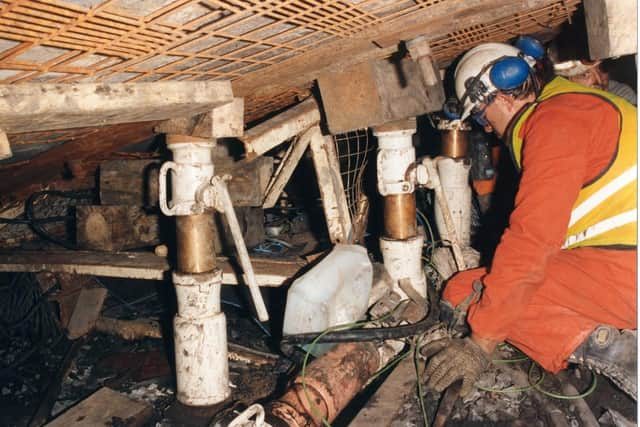

"Men were stuck there for three days, and I did 56 hours of work in total,” recalls John.
"Working-time directives were not very relevant. You just got on with it .
"It was a bitter-sweet experience. It was successful because we rescued a lot of people. But we also recovered bodies and had to return them to their families.
Advertisement
Hide AdAdvertisement
Hide Ad"Those families didn’t want the last resting place of their loved ones to be underground in a coal mine. They wanted to say goodbye.”
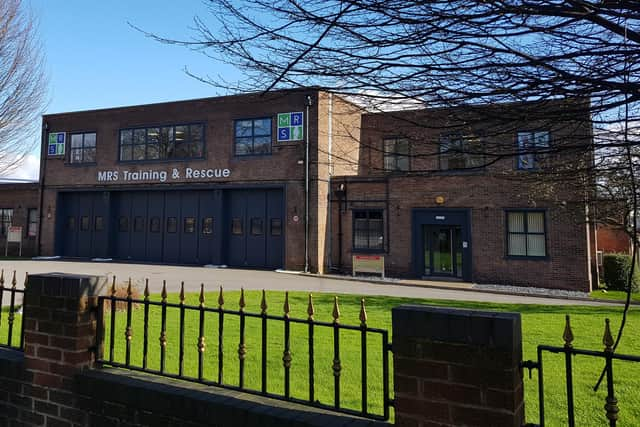

Such trauma, such tragedy was an all-too-familiar part of the working life of John and his colleagues at the Mines Rescue Service (MRS) in the days when King Coal reigned in so many Nottinghamshire towns and villages.
For more than 100 years, the service developed knowledge and experience to rescue mineworkers from danger underground.
But now things are very different. Only four years after the Bilsthorpe disaster, the pit closed.
Advertisement
Hide AdAdvertisement
Hide AdBy 2015, when Thoresby Colliery shut, there were no pits left in the county.
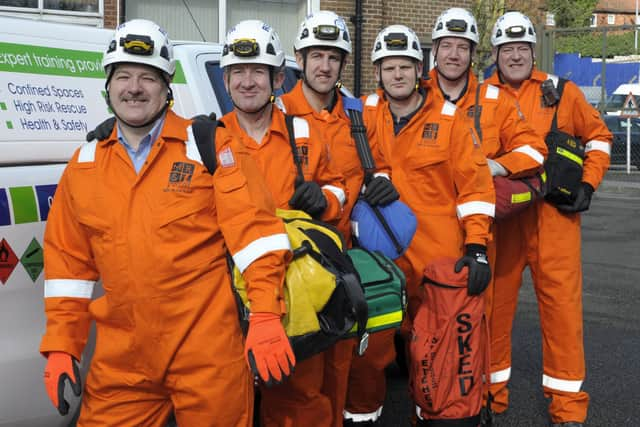

And with the closure of Eckington in Derbyshire a couple of years ago, the MRS station at Mansfield had no collieries at all on its books.
Yet the service has survived.
The Mansfield centre is still there on Leeming Lane South and John is still around too, having risen to operations manager responsible for a team of 18 rescue workers and five administration staff
The reason is evolution and diversification.
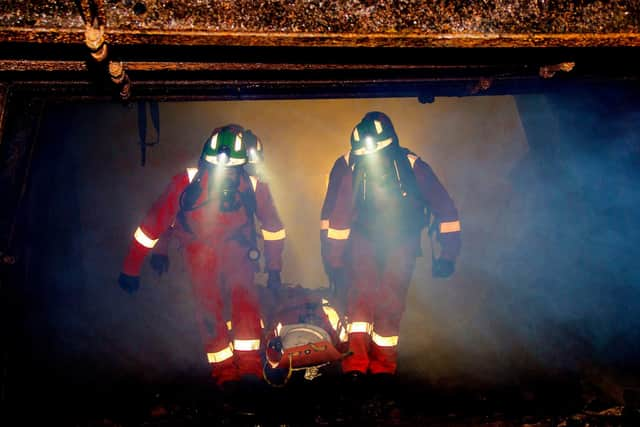

MRS is now a private, limited company, no longer controlled by the coal authorities but a commercial enterprise in its own right with an annual turnover of up to £11m and expected to generate income of £2m from the Mansfield Woodhouse site alone this year.
Advertisement
Hide AdAdvertisement
Hide AdFrom maintaining safety at pits and responding to emergencies, such as that at Bilsthorpe, MRS has turned itself into a key player in the general health and safety market – branching out to provide a range of products, training and services to a wide selection of industries and their employees.
Much of the training takes place in specially adapted classrooms on site.
"It has been a massive transformation,” admitted John, who has been with MRS for 38 years after spending the first six years of his working career at Arkwright Colliery in Derbyshire.
“Within three days of me starting, I was called out to Sherwood Colliery where three miners had to be rescued.
Advertisement
Hide AdAdvertisement
Hide Ad"And over the years, I have seen rescues, entrapments, amputations, deaths and other traumatic incidents.
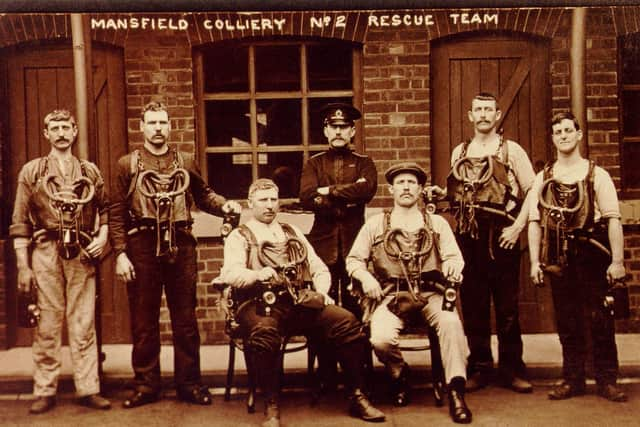

"But after the privatisation of the coal industry in the UK in 1996, we became a commercial business and, as staff, we had to diversify and change our skills.
"Not many of us came from academic backgrounds, but we had to learn teaching and become instructors and assessors.”
The centre is the headquarters of MRS, which has eight sites across the country and employs 156 full-time staff.
Advertisement
Hide AdAdvertisement
Hide AdThe company hasn’t totally relinquished its association with mines.
There is still a gypsum mine at East Leake to look after, a salt mine, potash mines and gold mines among others.
But MRS specialises now in confined-space training and supervision.
It has contracts with huge firms, teaching hazard safety and emergency rescue when working in confined spaces, such as tunnels, and at height.
Advertisement
Hide AdAdvertisement
Hide AdSafety measures such as the use of equipment, like breathing apparatus, ladders and harnesses, the use of gas-detection equipment and the erection of towering scaffolding.
The company also uses its expertise to provide first-aid training to organisations such as Mansfield and Ashfield district councils and inspections of items at places ranging from hospitals to reservoirs.
When Clifton Bridge in Nottingham was hit by corrosion and torrid traffic trouble last year, MRS was there to supervise repair work.
When HS2 protesters dug themselves a tunnel near Euston Station in London earlier this year, MRS was there to support the protesters and High Court eviction team to ensure a safe outcome
Advertisement
Hide AdAdvertisement
Hide AdAnd when the fountain at Old Market Square in Nottingham needed attention recently, MRS staff were on hand to ensure no undue risks were taken.
Explained John: “We manage the entry of confined spaces, and all aspects of that job.
"We create rescue plans and handle any first-aid emergencies.
"We are prepared to deal with anything. Our people have advanced skills, such as administering oxygen.
Advertisement
Hide AdAdvertisement
Hide Ad"Some of our rescue skills are quite unique. Virtually no other companies can offer them.
"For example, we can work in tunnels using specialist long-duration equipment. We have breathing apparatus that can last up to four hours. That of a typical firefighter would last 35 minutes.”
Symbolic of the vast changes MRS has gone through is a new look and a fresh identity currently being given to the Mansfield centre.
Since it first opened in 1958, its appearance has remained largely unchanged – complete with its fire-station style doors that have always adorned the front.
Advertisement
Hide AdAdvertisement
Hide AdBut the doors are to go amid the creation of three new classrooms and a bigger car park.
The scheme follows a record year for the business, with a 30 per cent increase in profits and an 11 per cent rise in staff numbers.
John said: “This is a significant investment for our business, especially during the challenging times the pandemic has brought. We have been fortunate to buck the economic trend.
"Modernising the building was necessary, but its history still matters. It’s important to tell the story of what it once was, so we are creating a timeline to preserve its local history.”
Advertisement
Hide AdAdvertisement
Hide AdHaving been part of that history since 1983, there are few people better placed to tell how the Mines Rescue Service has played such an important part in Mansfield’s past than John.
He has even lived just around the corner, on Albany Close, for most of that time, bringing up a family in what he described as a close-knit community.
"All the staff lived so near because the site had to be manned 24/7,” said John. “We had a bell in our houses that would ring whenever there was an emergency and we had to run to the station.
"We were always on standby for rescues, but it was a brilliant place to bring up my three children. We had lots of parties and gatherings for special occasions.”
Advertisement
Hide AdAdvertisement
Hide AdTimes have moved on, and so has John – to a new home in Forest Town as he prepares for retirement and a chance to mull over his MRS career.
"Most of my memories are of the action-packed rescues,” he said. “But as things moved forward, we spent a lot of time modernising the way the site operates.
"I have risen from tea lad to the boss, and I hope my legacy will be leaving a modern, efficient and profitable business.”
